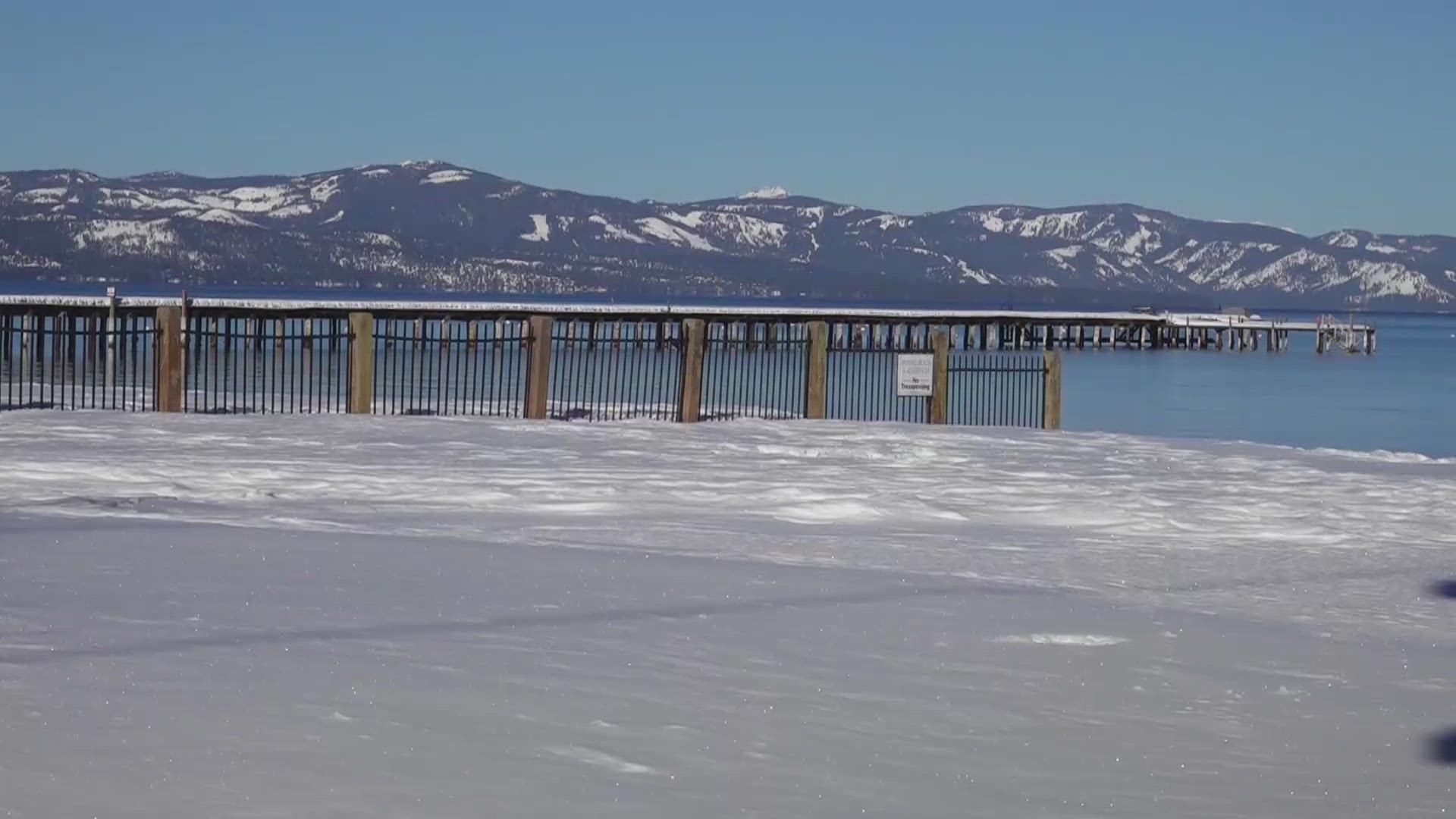SOUTH LAKE TAHOE, Calif. — Lake Tahoe is known for its crystal clear water, but the loss of lake clarity has been top of mind for locals since it was first measured back in the 1960s. Since then, the clarity has changed from roughly 100 feet to nearly 70 feet.
Jeff Cowen is the spokesperson for the Tahoe Regional Planning Agency, a bi-state agency managing the growth and development of the Tahoe basin while keeping environmental goals in mind.
“We’ve lost 30 feet of clarity from things like fine sediment and ultra-fine sediment. This is when road sands and road materials get ground up over and over again with cars traveling over it,” said Cowen. “When you have a big storm event or a lot of snow melt, that fine sediment, that material gets washed closer and closer to the lake.”
The good news is clarity has remained relatively stable over the last 20 years or so. The combined efforts of local environmental projects, stormwater filtration systems, and advanced road maintenance technologies help keep pollutants like sediments, nitrogen, or phosphorus out.
“We just see so much commitment and partnership in the basin around trying to balance what the community's needs are and what will help clean the lake,” said Cowen.
Jeff says much of the technology around stormwater management was born in the Tahoe Basin because of the lake’s sensitivity to pollution.
According to Cowen, residences and roads are being created with stormwater filtration systems built-in, and every property owner is responsible for putting in stormwater infiltration measures.
Anush Nejad is the Director of Public Works for the City of South Lake Tahoe and he says this year has been unique due to the sheer amount of snow and rain.
“One of the biggest challenges that we have, especially this year, is the amount of snowfall that we got,” said Nejad. “We have all of this snow storage and we’re basically at the limits of the space that we have.”
So far, Nejad says there was one period of storms where city staff worked for 25 days straight, 24/7, maintaining about 256 lane miles of roadway.
First, snow crews brine and sand the roads to make them softer. Then, they plow the streets, first focusing on main roads and then local ones. Their main priority is to ensure roads are clear for schools, hospitals, and emergency vehicles.
Sediments like brine and sand are necessary to keep people safe, but crews are using the materials in a more advanced way with lake health in mind.
“They're applying both brine and salt and grit but it's being kept out of the lake through three ways,” said Cowen. “They are reducing the amount that they use through technology and temperature sensors and they are installing roadway infiltration measures that clean the stormwater later on when it all melts. We also have an amazing street sweeping system that goes through and as soon as it's dry enough they will clean the streets and get a lot of those ultra-fine sediments off the road as well.”
Cowen says the area now has a handle on the fine sediments and through these measures on the road and filtration of stormwater and runoff, it keeps the lake clearer.
If you are heading up to South Lake Tahoe this weekend, watch out for potholes! Nejad says the cycle of snow and rain has damaged local roads throughout the city.
"We have a lot of potholes so were moving forward to change the operation to fix the potholes. We are going to do it for the major roadways first and then continue with the rest of the streets in the city," said Nejad.



















